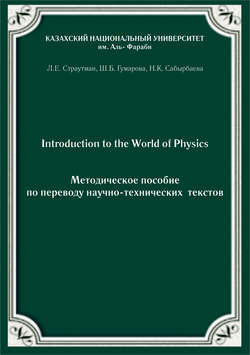Читать книгу Introduction to the World of Physics. Методическое пособие по переводу научно-технических текстов - Lidiya Strautman - Страница 7
На сайте Литреса книга снята с продажи.
LESSON 7
Active vocabulary
ОглавлениеCelestial body – небесное тело
Tensile – растяжимый; эластичный
Conventional – обычный, обыкновенный, традиционный;
Hazard – риск, опасность
Anchored – надёжно закрепленный
Tether – привязь
Subset – подмножество
Skyhook – антенна; подвеска
Attain – достигать, добираться
Deploy- развёртывание
Feasible – реальный, выполнимый, осуществимый (о замысле, плане и т. п.)
Taper – плавный волноводный переход, заострение (сужение к краю, концу)
Centrifugal force – центробежная сила
Disturbance – беспокойство, тревога; возбуждение
Payload – грузоподъёмность
ore – руда
instantaneous velocity – мгновенная скорость
compile – выбирать информацию, собирать материал (из разных источников)
ribbon – лента, ленточка; тесьма
shield – защита; защитное средство
oscillation – качание, раскачивание, колебание
geostationary orbit – геостационарная орбита
altitude – высота; высота над уровнем моря
ascent – восхождение, подъём
drag – тянуть, тащить, волочить
pendulum – маятник
tilt – наклон, наклонное положение
efficiency – эффективность, результативность, действенность
dissipation – рассеяние, рассеивание
extraterrestrial – внеземной
bulk – груда, кипа; масса
suspension – приостановка, пауза, перерыв
Text 7
A space elevator
A space elevator is a proposed structure intended to transport material from the surface of a celestial body, particularly Earth, into space. Many variants have been proposed, all of which involve moving the material along a fixed structure instead of using rocket powered spacelaunch. The concept most often refers to a structure that reaches from the surface of the Earth to geostationary orbit (GSO) and a counter-mass beyond. Space elevators have also sometimes been referred to as beanstalks, space bridges, space lifts, space ladders, skyhooks, orbital towers, or orbital elevators.
Recent discussions focus on tensile structures (tethers) reaching from geostationary orbit to the ground. (A tensile structure would be held in tension between Earth and the counterweight in space, like a guitar string held taut.) However, current technology is not capable of manufacturing practical materials that are sufficiently strong and light to build an Earth-based space elevator. This is because the total mass of conventional materials needed to construct such a structure would be far too great. Moreover, a space elevator would present a considerable navigational hazard for both aircraft and spacecraft.
A space elevator would consist of a cable anchored to the Earth's surface, reaching into space. By attaching a counterweight at the end (or by further extending the cable for the same purpose), inertia ensures that the cable remains stretched taut, countering the gravitational pull on the lower sections, thus allowing the elevator to remain in geostationary orbit. Once beyond the gravitational midpoint, carriage would be accelerated further by the planet's rotation. (Diagram not to scale.)
Geostationary orbital tethers
This concept, also called an orbital space elevator, geostationary orbital tether, or a beanstalk, is a subset of the skyhook concept, and is what people normally think of when the phrase 'space elevator' is used (although there are variants).
Its construction would be a vast project: a tether would have to be built of a material that could endure tremendous stress while also being lightweight, cost-effective, and manufacturable in great quantities. Materials currently available do not meet these requirements, although carbon nanotube technology shows great promise. A considerable number of other novel engineering problems would also have to be solved to make a space elevator practical. Not all problems regarding feasibility have yet been addressed. Nevertheless, the LiftPort Group stated in 2002 that by developing the technology, the first space elevator could be operational by 2014.
History
The key concept of a space elevator dates back to 1895, when Russian scientist Konstantin Tsiolkovsky, proposed a compression structure (that is, a free-standing tower), or "Tsiolkovsky tower," reaching from the surface of Earth to geostationary orbit. He was inspired by the Eiffel Tower in Paris to consider a tower that reached all the way into space, built from the ground up to an altitude of 35,790 kilometers above sea level (geostationary orbit). He noted that a "celestial castle" at the top of such a spindle-shaped cable would have the "castle" orbiting Earth in a geo stationary orbit (i.e. the castle would remain over the same spot on Earth's surface).
Tsiolkovsky's tower would be able to launch objects into orbit without a rocket. Since the elevator would attain orbital velocity as it rode up the cable, an object released at the tower's top would also have the orbital velocity necessary to remain in geostationary orbit. Unlike more recent concepts for space elevators, Tsiolkovsky's (conceptual) tower was a compression structure, rather than a tension (or "tether") structure.
